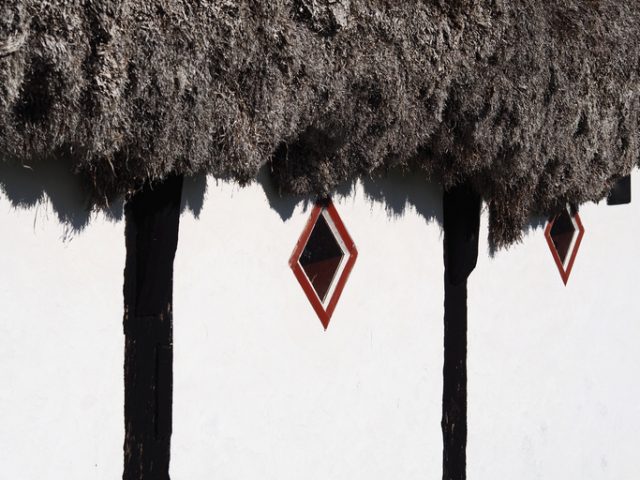The village island of Læsø, off the coast of Denmark, has preserved houses built of driftwood for hundreds of years. The roofs of these houses were uniquely made using seaweed.
Læsø became well-known in the Middle Ages for its flourishing salt industry, possible thanks to the island’s extensive tidal saltmarsh and naturally occurring salt meadows. Numerous salt kilns requiring a constant supply of fuel were built on the island to refine salt.
Practically the entire island of Læsø was turned over to salt production. Groundwater can contain more than 15 percent salt, which would be concentrated in natural salt pans during hot, dry summers.

The fuel used to refine the salt was provided by the limited amount of woodland on the island which later became unavailable as the most trees had been cut down.
Without the wood available for use as a source of fuel for the kilns, the Læsø salt industry collapsed. The deforested island was vulnerable to the wind, and the villages were buried under sandstorms. The air became salt-filled which had a direct effect on the growth of plants and grasses.
With virtually no new timber to build their homes, the islanders constructed their homes from driftwood with the roofs made of eelgrass.

Since the seaweed and driftwood were saturated with saltwater, these homes were not prone to decay and have remained virtually the same since the 17th century.
These eelgrasses that grow abundantly in the sea surrounding Læsø island have long, bright-green leaves in the form of ribbons. They are about a centimeter wide and approximately two meters in length. Farmers collect eelgrass that washes up on the seashore.

The eelgrass is dried, then bundled and twisted into thick ropes that are weaved through the rafters of houses to form a roof. Once made, these seaweed roofs — which are a unique feature of Læsø island — hang over the walls and gives the impression that the house is wearing a huge cloak.
A freshly-made seaweed roof is not waterproof, but water is not able to penetrate the building because of its thickness. Less than 12 months after it’s made, the roof becomes silvery grey, solidifies and becomes waterproof as plants grow on the thatch. The mass becomes solid with time as the roof ages.

Due to the high concentration of salt in the air, the eelgrass does not burn and has a very long life. According to Meeting the Other in Norse Myth and Legend by John McKinnall, a seaweed roof typically lasts 200 years; some have lasted as long as 400 years. At about 5,000 DKK per square meter ($90/sq. ft) the seaweed costs four times more than that of Denmark’s straw thatching, which lasts some 30-40 years.
The eelgrasses were attacked by a disease in the 1930s which made it quite challenging to maintain the roofs. This marked the beginning of the end for this type of roofing on the island.

While there were over 250 homes and farms thatched with seaweed in the 18th century, that number has reduced drastically to just 19 homes. A heritage project was set up in 2009 to ensure that the seaweed homes of Læsø island do not go extinct. A part of the project involved teaching farmers in the south of Denmark to make and harvest eelgrass.
Read another story from us: Ancient Roman Bathhouse still in use today
The island has since been reforested, and the inhabitants can no longer view the sea from roofs of their homes as a lot of houses are surrounded by trees, which protects them from salt-laden winds.
